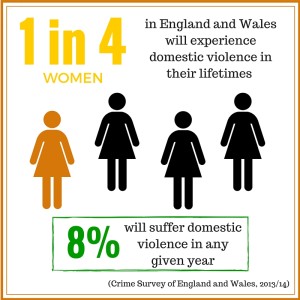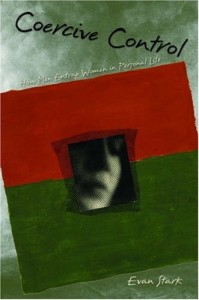The UK government has extended the definition of domestic abuse to capture coercive and controlling behaviour. What does this mean in practice and how will it affect those who suffer from domestic abuse?
Introduction
The reality of violence against women is that it is not an isolated
There are many different forms of violence against women which range from psychological to physical violence and murder. In this article I will focus on violence in intimate relations (domestic violence) and in particular coercive behaviour, using Evan Stark’s concept of ‘coercive control.’ This will put into context the decision by the UK government in March 2015 to update The Serious Crime Bill to include the offence of “controlling or coercive behaviour in an intimate or family relationship.” Coercive and controlling behaviour are key indicators of domestic violence in themselves, which I will explain later, and can also be warning signs for physical abuse in intimate relations. It is certainly progress to include this in the UK legislation, but I will demonstrate how some have critiqued this amendment and that more needs to be done to protect women from domestic violence.
Coercive Control
When many people think about domestic violence they question why the victim remains in the situation and does not seek out help. This is a key factor which leads to victim blaming rather than addressing the fact that one of the main components of domestic violence is psychological manipulation. Coercive control is a strategy which uses malicious and calculated behaviour to establish dominance over another. It is a daily control mechanism sometimes utilising only a few episodes of physical violence to maintain fear. Common tactics include:
Isolation
- The separation from your contacts and from the world in general
- Becoming reliant on the opinion of the assailant
Financial
- Limiting access to money
- Financial threats
- Ruining financial or credit records
- Stealing from you
Damaging your reputation
- At work or in the family and friendship networks
- Particularly affects immigrant women
Manipulation
- ‘Gas-lighting’ = a form of mental abuse by providing false information and making victims doubt their own memory and perceptions
- Psychological and emotional games
- Using children as a way of getting to the mother through cutting them off or telling them lies
Control
- Of the clothes worn, hygienic routine, sexual rules
- Of the work and capacity to leave the house
Stalking
- On the computer, telephone
- Through third parties, direct following or GPS
- The feeling that she is always being watched
The effect of these tactics include; fear, panic, depression, loneliness, health problems, low self-esteem, a lack of concentration and losing the feeling of who you are as a person. Using all or some of these tactics, combined with sporadic episodes of physical violence, strips away a person’s sense of self and is a direct violation of human rights.
Evan Stark’s book ‘Coercive Control: How Men Entrap Women in Personal Life’ details the coercive and psychological components to domestic violence and I will use his findings here. Stark uses the concept of coercive control to describe a systematic control mechanism affecting the women;
“Like hostages, victims of coercive control are frequently deprived of money, food, access to communication or transportation, and other survival resources… the primary harm abusive men inflict is political, not physical, and reflects the deprivation of rights and resources that are critical to personhood and citizenship” (2007, p.5).
It can be extremely difficult for domestic violence victims to be aware of the extent of the psychological manipulation used to control them as it attacks their freedoms rather than physical integrity. Even if they are aware of the abuse, it can be too traumatic to bring a case to the authorities who are dismissive unless there are clear markers of violent behaviour. For instance, Stark discusses how domestic abusers withhold documents and fully control the economic welfare of the victims, and that what the abuser does to them physically is less important than what they have prevented them from doing by appropriating their resources (2007, p.13). Without specific legislation in place to criminalise this coercive activity and actively protecting the victims, the crimes go unreported and the perpetrators continue with impunity.
UK Domestic Violence Law Reform
In March 2015 the UK Government extended the definition of domestic abuse to capture coercive and controlling behaviour, in recognition that non-violent abuse can be as damaging as physical violence. Before they made the alteration, they conducted a survey to explore whether the previous law should be strengthened to provide the best possible protection to victims. They summarised the main findings as follows, which led to a change in the law: “A significant majority of those who responded (85%) were in favour of strengthening the law on domestic abuse, and felt the current law does not capture the Government definition of domestic abuse (70%)” (Home Office, p.4).
The update to the bill should now be in force as it has been 6 months since the implementation of the amended Serious Crimes Bill. The maximum penalty for the new offence in England and Wales will be five years in prison and a fine. It is possible to use evidence in court such as threatening text messages, emails and bank statements showing financial control over the victim. Women’s organisations have welcomed the updates to the law and are hopeful that it will be easier to prove coercive control and manipulative behaviour over a victim. However, the amendments are not perfect and will not fix the problem of domestic violence. As Sandra Horley, chief executive of the domestic violence charity Refuge states, there are “already enough laws” and the problem is with incorrect implementation rather than creating a new offence of the crime. Women’s Aid also warned that the offence could be easily manipulated by perpetrators to avoid being charged with domestic abuse.
Conclusion
It is vitally important to include coercive and manipulative behaviour in domestic violence legislation, to ensure that there is a mechanism in place for victims to be able to go to the authorities to seek help. As the UK has made this step it will be interesting to see if the legislation makes an impact on the number of cases of domestic violence brought to court and if it makes it easier for the victims to prove that coercive control tactics were used. However, this alone is not enough, there needs to be greater public awareness of the extent of this crime in order for people close to victims to pick up on the signs if their friends and family members fall prey to this abuse and for victims to identify early-warning signs themselves. Officials also need to be trained in how to protect victims of coercive control mechanisms to ensure that the reporting and court systems are appropriate and safe for the victims.
References:
Office for National Statistics, released 12 February 2015. Chapter 4: Violent Crime and Sexual Offences – Intimate Personal Violence and Serious Sexual Assault.
Stark, Evan. 2007. Coercive Control: How Men Entrap Women in Personal Life. Oxford: Oxford University Press.
UK Home Office, December 2014. Strengthening the Law on Domestic Abuse Consultation – Summary of Responses.
________________________________________________________________________________________________
Do you need help?
The NHS give advice on who to turn to in the UK if you need help, see here for more details:
-
- talk to your doctor, health visitor or midwife
-
- call 0808 2000 247, the 24-hour National Domestic Violence Helpline run in partnership between Women’s Aid and Refuge (calls from a landline are free)
- in an emergency, call 999
The Survivor’s Handbook from the charity Women’s Aid is free and provides information on a wide range of issues such as housing, money, helping your children and your legal rights. The handbook is available as a downloadable PDF in 11 languages.
References:
Office for National Statistics, released 12 February 2015. Chapter 4: Violent Crime and Sexual Offences – Intimate Personal Violence and Serious Sexual Assault.
Stark, Evan. 2007. Coercive Control: How Men Entrap Women in Personal Life. Oxford: Oxford University Press.
UK Home Office, December 2014. Strengthening the Law on Domestic Abuse Consultation – Summary of Responses.
________________________________________________________________________________________________
Do you need help?
The NHS give advice on who to turn to in the UK if you need help, see here for more details:
- talk to your doctor, health visitor or midwife
- call 0808 2000 247, the 24-hour National Domestic Violence Helpline run in partnership between Women’s Aid and Refuge (calls from a landline are free)
- in an emergency, call 999





[…] domestic violence in the UK […]